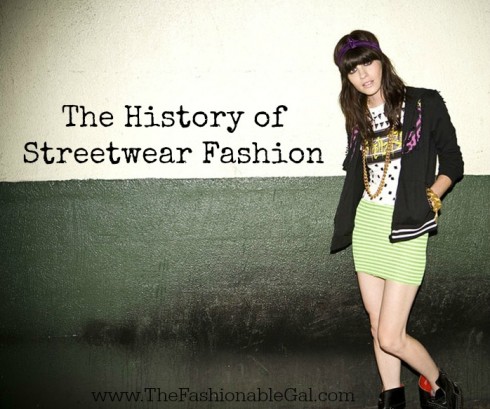
Streetwear can be as slippery to define as what’s ‘cool.’ With roots in the ‘express yourself movement’ of punk rock, early street clothes drew from hip-hop, punk and other musical, fashion, personal and cultural sources.
Shawn Stussy
Can you get more punk than selling your surf boards and clothing out of a car? Perhaps he’s not the father of street clothing, yet Shawn’s roots stand as a shining example of streetwear fashion and culture.
Shawn wanted to combine the 70’s west-coast surf culture with comfort as well as the regality and prestige high-end brands demanded, not only to mock the stuffy brands but to make the ‘street kid’ a Romantic figure in fashion much like the 18th-century poets respected the ‘common’ man.
Nike
In the 80’s, Nike became a huge brand in the sneaker industry. Perhaps Nike’s zenith moment was the mid-eighties with basketball legend-in-the-making, Michael Jordan, piloting the iconic Air Jordans.
The original Jordans, red, white, and black with Nike’s recognizable swoosh emblem. Street culture would come to adopt the shoe and its many iterations, still taking place decades later. Artists, sports players, hip-hop artists and celebrities alike are admitted Jordan collectors.
Another style that is gaining popularity and has a cult following is Nike Roshe.
Graffiti
In the 80s and growing in the 90s, graffiti was an artistic outlet despite impending legalities. Street ‘art’ and associated spray painting, stenciling and using other multimedia for expression is tied to the street movement.
Function dictated fashion form; brands produced comfortable and loose-fitting shirts and pants, satiating the fashion minded but also adopting a utilitarian effect, with deep pockets, cuts facilitating actions of skateboarding, art making, and engaging in parkour, kept in mind during design phases. Go to sites such as the Black Sheep Store to see the latest in brands and fashion online.
Hip-Hop
It’s debatable as to where and when hip-hop music started, or if it continues today, though one cannot deny the scores of ‘rappers’ in the music industry. Hip-hop, much like punk, formed out of a need for expression, with ‘MCs’ coupling lines of thought (usually rhymed) with a DJs original or mixed beats.
The explosion of rap labels and artists in the 90s and early 2000s ushered a number of streetwear brands like Wu-Wear, Carhartt, and Lil Wayne’s Trukfit clothing – supposedly, the name originates from trucks that would patrol poor neighborhoods selling mainstream clothing at high discounts (possibly due to illegal acquisition). Lil Wayne recalls keen eyes recognized those wearing ‘truck fits’ and store-bought outfits.
Amalgam
Today, it’s hard to place a finger on what ‘look’ designates streetwear or what activity is exclusive to those immersed in the culture. In 2014, streetwear is an attitude, as it’s always been, but music like punk and hip-hop, sports like skating and surfing, as well as personalities as random (or similar) as Lil Wayne and Tony Hawk all have street in common.
To go back to the roots, Shawn Stussy wanted his vibe of expression, equality, and positivity to reach beyond America’s western coast. Being one can find derivatives of street fashion and culture in Japan, New York City and Sweden, it appears he’s succeeded, and after decades of growing pains, additions, subtractions and transformations, ‘street’ legacy is cemented in history.
GUEST BLOGGER: Â Paul Harrison is studying his final year in clothing design. He particularly enjoys tracking changes in street wear and his articles mainly appear on fashion and lifestyle blogs.